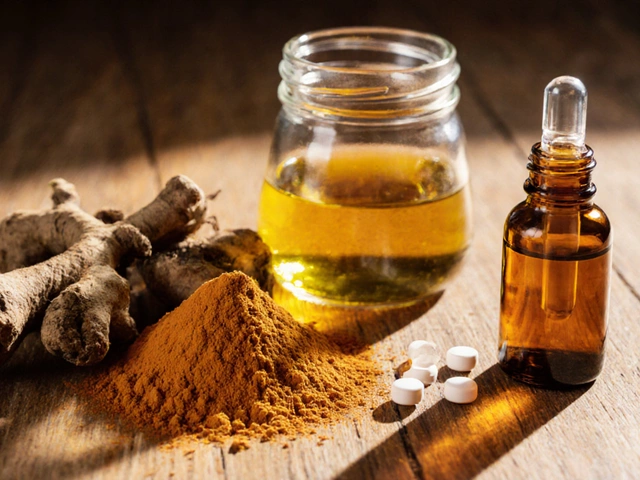Effective Arthritis Pain Relief – What Actually Works
Living with arthritis can feel like a constant battle against stiff joints and throbbing aches. You’ve probably tried a few creams, pills, or stretches, but the relief never lasts. The good news? There are simple, science‑backed tricks that can cut the pain without adding toxic side effects.
Start with What’s in Your Kitchen
Two everyday foods can act like a mini‑anti‑inflammatory clinic. Turmeric, the golden spice in many Indian dishes, contains curcumin which blocks pain‑triggering chemicals. Mix a teaspoon of turmeric powder with warm milk or a dash of black pepper (it helps the body absorb curcumin) and drink it once a day.
Another powerhouse is ginger. Fresh ginger tea or adding grated ginger to your meals can lower joint swelling. Both spices are safe for most people, but if you’re on blood thinners, keep the portions moderate and talk to your pharmacist.
Move Smart, Not Hard
Exercise sounds scary when your joints hurt, but gentle movement is the secret behind long‑term relief. Aim for low‑impact activities like brisk walking, swimming, or a short yoga flow. Even five minutes of shoulder rolls or ankle circles each morning can keep synovial fluid flowing, which lubricates the joints.
Don’t forget strength training. Using light resistance bands or holding a water bottle while doing squats builds the muscles that protect your knees and hips. Start with one set of 10 reps and increase slowly; the goal isn’t to get ripped, just to give your joints a sturdy cushion.
Warm showers, a hot water bottle, or a microwave‑able heating pad can ease stiffness before you move. Heat increases blood flow and loosens up tight tissues, making the subsequent stretch feel safer.
Check Your Meds for Hidden Risks
Many over‑the‑counter painkillers, especially non‑steroidal anti‑inflammatories (NSAIDs) like ibuprofen, can irritate the stomach lining and raise blood pressure if used daily. If you rely on them often, ask a doctor about safer alternatives or the lowest effective dose.
Some prescription drugs for arthritis contain steroids that may cause side effects such as weight gain, mood swings, or higher infection risk. Keep a medication diary: note the drug name, dose, time, and any new symptoms. This helps you and your doctor spot problems early.
Because Toxic Medicine Insights focuses on drug safety in India, remember that many generic brands may have different filler ingredients. If you notice unusual reactions—like rashes, dizziness, or digestive upset—stop the medicine and get it checked.
Supplements: Choose Wisely
Glucosamine and chondroitin are popular, but research shows mixed results. If you decide to try them, look for products that are USP‑verified and avoid those with excessive heavy‑metal warnings. Vitamin D and calcium support bone health, especially if you spend most of the day indoors.
Omega‑3 fish oil can lower inflammation too. A daily dose of 1,000 mg of EPA/DHA is enough for most adults. Choose a reputable brand that lists the exact concentration on the label.
When to See a Professional
If pain interferes with daily chores, sleep, or you notice swelling that doesn’t go down in a few days, schedule a visit to a rheumatologist. Early intervention can prevent joint damage and give you a personalized treatment plan.
Remember, effective arthritis pain relief isn’t a one‑size‑fits‑all hack. It’s a mix of diet, gentle movement, safe medications, and regular check‑ups. Try a few of the tips above, track what helps, and tweak the plan as you go. Your joints will thank you for the thoughtful care.

Most Effective Painkillers for Arthritis: What Really Works in 2025?
Discover which painkillers work best for arthritis, their pros and cons, new research from 2025, plus practical tips. Learn what to use and what to avoid.

Which Vitamins You Should Avoid Taking Together
Jan, 3 2025



